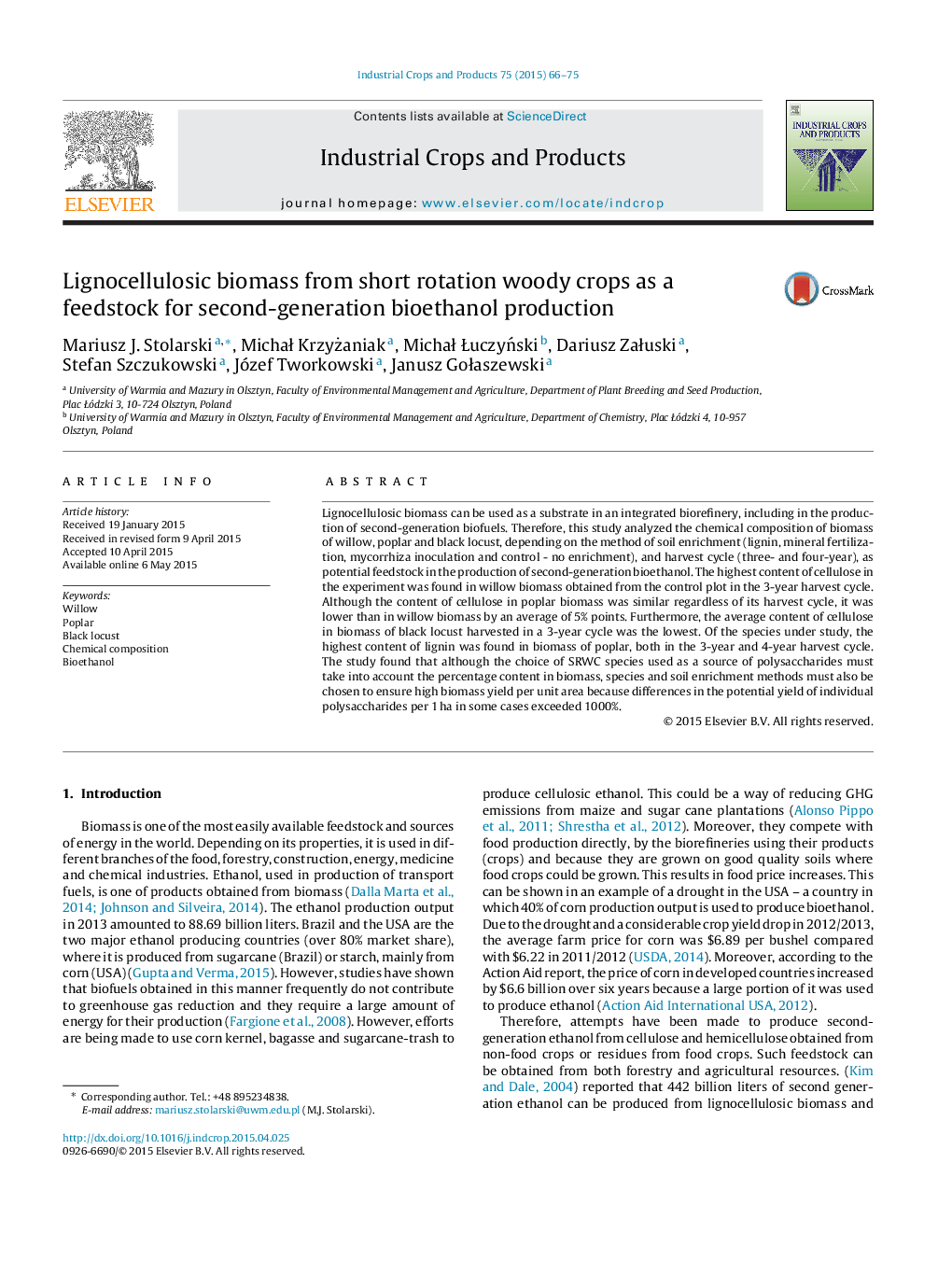| کد مقاله | کد نشریه | سال انتشار | مقاله انگلیسی | نسخه تمام متن |
|---|---|---|---|---|
| 4512828 | 1322172 | 2015 | 10 صفحه PDF | دانلود رایگان |
• The aim was to determine chemical composition of lignocellulosic crops.
• Species, soil enrichment and harvest cycle influenced chemical composition.
• The highest content of cellulose was found in willow biomass.
• The highest content of lignin was found in poplar biomass.
• Willow plantation can yield 3.6–4.2 Mg ha−1 year−1 d.m. of cellulose.
Lignocellulosic biomass can be used as a substrate in an integrated biorefinery, including in the production of second-generation biofuels. Therefore, this study analyzed the chemical composition of biomass of willow, poplar and black locust, depending on the method of soil enrichment (lignin, mineral fertilization, mycorrhiza inoculation and control - no enrichment), and harvest cycle (three- and four-year), as potential feedstock in the production of second-generation bioethanol. The highest content of cellulose in the experiment was found in willow biomass obtained from the control plot in the 3-year harvest cycle. Although the content of cellulose in poplar biomass was similar regardless of its harvest cycle, it was lower than in willow biomass by an average of 5% points. Furthermore, the average content of cellulose in biomass of black locust harvested in a 3-year cycle was the lowest. Of the species under study, the highest content of lignin was found in biomass of poplar, both in the 3-year and 4-year harvest cycle. The study found that although the choice of SRWC species used as a source of polysaccharides must take into account the percentage content in biomass, species and soil enrichment methods must also be chosen to ensure high biomass yield per unit area because differences in the potential yield of individual polysaccharides per 1 ha in some cases exceeded 1000%.
Journal: Industrial Crops and Products - Volume 75, Part B, 30 November 2015, Pages 66–75
